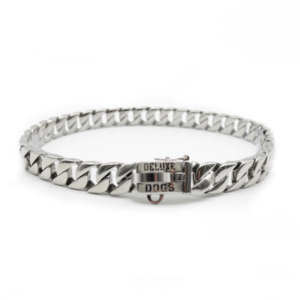Introduction:
Dog leads play a crucial role in the lives of both dogs and their owners, serving as a vital tool for walking, training, and ensuring the safety of our furry friends. With a myriad of options available in the market, finding the perfect dog lead can be overwhelming. This article aims to unravel the world of dog leads, shedding light on the types, materials, and features that make each one unique. Whether you’re a new pet owner or a seasoned canine enthusiast, understanding the intricacies of dog leads can enhance the bond between you and your four-legged companion.
Types of Dog Leads:
- Standard Leads: Standard leads are the most common type, typically made of nylon or leather. They come in various lengths, allowing dog owners to choose the one that best suits their preferences. Standard leads are versatile and suitable for everyday walks, providing a secure connection between the dog and its owner.
- Retractable Leads: Retractable leads offer dogs more freedom to explore while still maintaining control. These leads consist of a long cord housed in a plastic handle, allowing owners to adjust the length as needed. While they provide flexibility, retractable leads may not be suitable for all dogs, especially those prone to pulling or aggressive behavior.
- Training Leads: Training leads are designed to aid in obedience training. They are typically longer than standard leads, allowing for more range of motion. These leads are useful for practicing commands, recall training, and teaching leash manners. Many training leads also come with additional handles for better control during critical moments.
- Martingale Leads: Martingale leads are a combination of a collar and a lead, offering a gentle correction for dogs that tend to slip out of traditional collars. The design prevents excessive pulling and ensures a snug fit without choking the dog. Martingale leads are particularly suitable for dogs with narrow heads or breeds prone to slipping out of collars.
Materials Used in Dog Leads:
- Nylon: Nylon leads are popular for their durability, affordability, and versatility. They come in a wide range of colors and patterns, allowing owners to express their style. Nylon leads are also lightweight and easy to clean, making them a practical choice for various weather conditions.
- Leather: Leather leads exude a classic and timeless appeal. While they may be more expensive than nylon, leather leads are known for their strength and durability. As they age, leather leads develop a unique patina, adding character. Regular conditioning is essential to maintain the leather’s quality and prevent it from becoming brittle.
- Chain: Chain leads are suitable for dogs that have a tendency to chew through traditional materials. They provide a sturdy option for larger or more powerful breeds. However, it’s crucial to ensure that the chain is appropriately sized to prevent discomfort for the dog.
- Cotton: Cotton leads are lightweight and soft, making them an excellent choice for smaller or more delicate breeds. However, they may not be as durable as nylon or leather, so owners should consider the dog’s size and strength when choosing a cotton lead.
Features to Consider:
- Handle Design: The handle of a dog lead can significantly impact the owner’s comfort during walks. Ergonomically designed handles, padded for extra comfort, are preferable for longer walks. Some leads also come with multiple handles, allowing for better control in various situations.
- Reflective Elements: For those who walk their dogs during low-light conditions, leads with reflective elements enhance visibility and safety. Reflective stitching or integrated strips can make both the dog and owner more visible to passing vehicles and pedestrians.
- Shock Absorption: Leads with shock absorption features are designed to reduce the impact of sudden pulls or jerks. This is particularly beneficial for both the owner and the dog, preventing discomfort and potential injuries.
- Swivel Clips: Swivel clips prevent the lead from tangling as the dog moves, providing a smoother walking experience. This feature is especially useful for active dogs or those prone to quick movements.
Conclusion:
Choosing the right dog lead is a crucial decision for every dog owner. By understanding the different types, materials, and features available, owners can select a lead that not only suits their lifestyle but also ensures the comfort and safety of their furry companions. Whether it’s a sturdy leather lead for a large breed or a reflective nylon lead for evening walks, the perfect dog lead is out there, waiting to enhance the bond between you and your canine friend. for blog to visit site techsolutionmaster.

